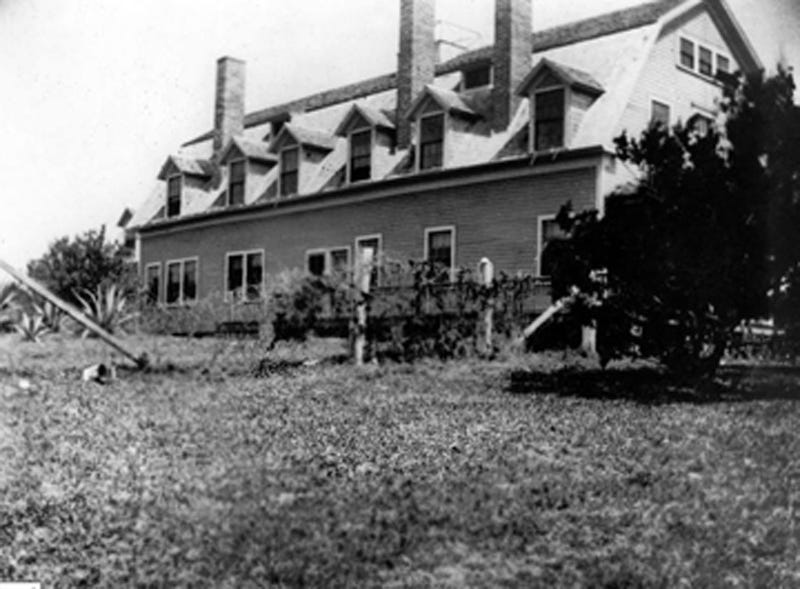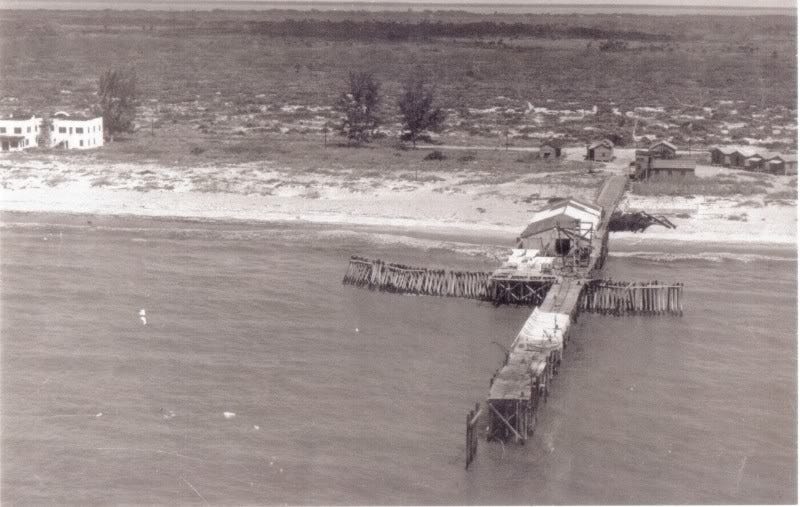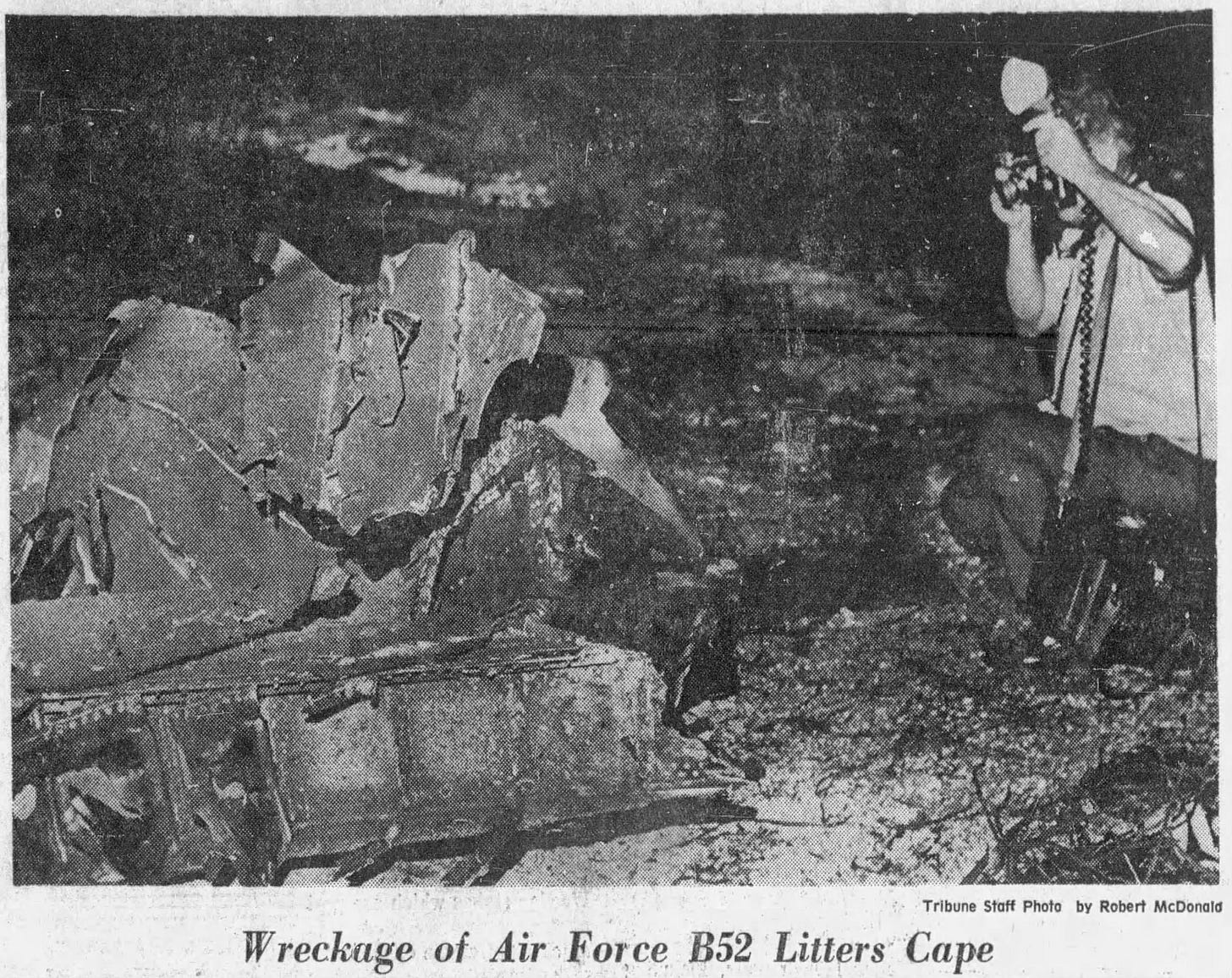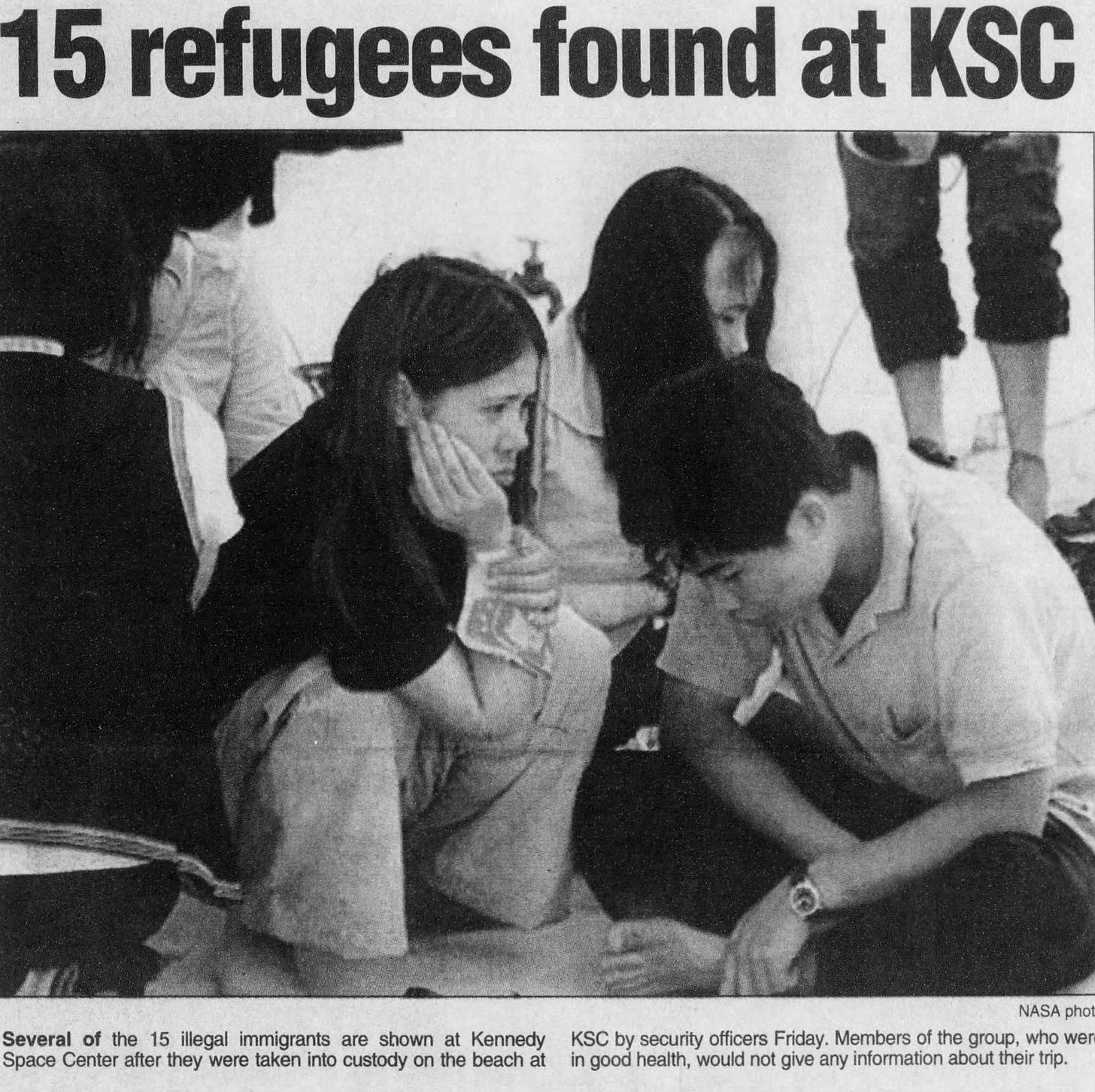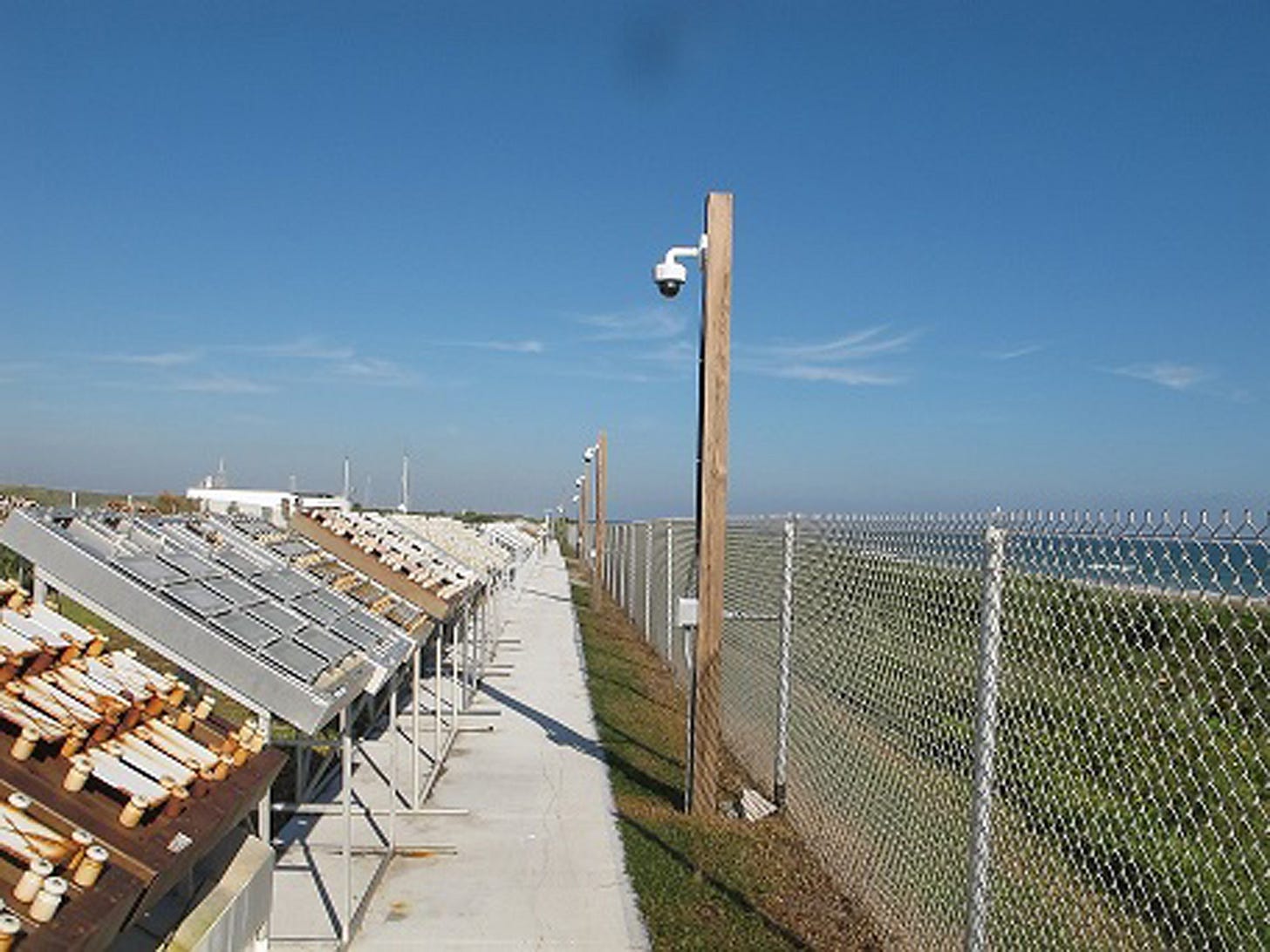Ten Trivials About the Space Coast
Have You Heard the One About …
For a region famous for firsts, north Brevard County has historical anecdotes beyond space, the final frontier.
Here are ten trivial anecdotes about the Space Coast that you may not know, most of which have little or nothing to do with space.
The French at Cape Canaveral — It’s fairly well known that the indigenous Ais people lived in the general area of the Cape long before European conquerors arrived. The first Europeans known to have visited the Cape were Spanish conquistadors who anchored offshore in 1513.
But other European colonials occupied the Cape at one time or another. The British controlled east Florida in the latter part of the 18th Century.
The French also tried to establish colonies in Florida, but with little success. Jean Ribault led multiple expeditions with Protestant Huguenot settlers, mostly from Jacksonville north into the Carolinas.
Seeing this as a violation of their territory, in 1565 the Spanish established a settlement at St. Augustine. Spanish ships fought French ships offshore. A tropical storm forced Ribault’s fleet south towards Cape Canaveral, where most of the fleet was lost.
According to a 2024 NASA cultural resources report, some evidence exists that Ribault and his survivors washed ashore east-northeast of today’s Launch Complex 39B. They marched north towards St. Augustine, where they were slaughtered by the Spanish.
An archaeological find in 1970-1971 discovered artifacts believed to have been left behind by the French shipwreck survivors. In 2016, the remains of Ribault’s flagship La Trinité were found sunk off the coast of Cape Canaveral, at a depth of about ten meters.
Centuries of erosion, both natural and human, have erased any onshore evidence. In recent years, NASA has rebuilt the sand berms along Launch Complex 39, to protect their facilities from the anticipated effects of climate change, as well as beach loss from hurricanes.
An illustration depicting French explorer Jean Ribault and his troops in Florida. Image source: Florida Memory.
Chester Shoal House of Refuge — The Cape Canaveral Lighthouse was a beacon for sailors, but not all shipwreck survivors could make it ashore to the cape. A number of refuge houses were created on the east coast of Florida in the late 19th Century. One was at Chester Shoal, near today’s Kennedy Space Center launch pad 39A.
The US Coast Guard converted Chester Shoal to a Coast Guard station in 1915. One website suggests it was inactive by 1940; photographic evidence suggests the buildings still stood in 1950. My guess is the station disappeared after NASA used eminent domain to acquire the land in the early 1960s.
This video imposes an image of the House of Refuge atop a recent image of launch pad 39A, to give you an idea of its location. Video source: bluewatertt3 YouTube channel.
Canaveral Club House — This hunting lodge was located not far from Chester Shoal, between KSC pads 39A and 39B. (The above House of Refuge video also shows the location of the Canaveral Club.) It was founded in 1890 by a wealthy group of Harvard University graduates. Access was only by boat, typically a local steamship called Canaveral or a club yacht called the Yankee Doodle (which must have gone over well in the post-Reconstruction South). The lodge was called by various names — Canaveral Club, Boston Club, Harvard Club, Harvard Gun Club.
The lodge was open to members between October and March (probably due to the local weather). Hunting trophies were on display in the clubhouse. The property may have had the first swimming pool in Florida; the pool was used by the pastor of the Orsino Baptist Church to perform baptisms.
The clubhouse was sold in 1921 and allowed to deteriorate. A developer acquired the property for a project called Surfside Beach, and told the Orlando Sentinel in January 1951 that he planned to restore the lodge as a sporting center, but that never happened. According to the North Brevard Historical Society, the US Air Force burned the building for fire practice sometime in the 1950s.
The Canaveral Club Lodge, unknown date. Image source: North Brevard Historical Society & Museum.
Journalista Beach — An ad in the March 3, 1924 Orlando Evening Reporter-Star touted the sure-fire return on investment for a developmental property called Journalista Beach, funded by “more than two hundred newspaper men all over the country.” Their company was called the Newspaper Men’s Development Corporation, based in Orlando.
An article in the May 31, 1924 Chattanooga News of Tennessee described Journalista as “on broad area of high land between the ocean beach and the Banana river (really a lagoon), and has a perfect beach twelve miles long and 300 feet wide.” The article places Journalista roughly along today’s Highway A1A north of State Route 520, near the border between the cities of Cape Canaveral and Cocoa Beach.
A two-page ad in the October 14, 1925 Miami Herald declared Journalista and other nearby proposed developments “Another Miami in the Making.” A subdivision would grow around a proposed Canaveral Harbor.
Journalista, the harbor, and other proposed developments failed when the US economy collapsed in 1929 to start the Great Depression.
This two-page ad appeared in the October 14, 1925 edition of the Miami Herald. Journalista Beach is shown south of a proposed seaport near a “14 mile speedway.”
Canaveral Casino — We think of a “casino” today as a place for gambling, if not iniquity, but its original meaning was more along the lines of a social club or resort. Such was the Canaveral Casino, which was part of the Canaveral Harbor Inn and nearby Canaveral Pier. These structures were near the east end of Pier Road, which still exists today at the Cape Canaveral Space Station.
Casinos already existed at Merritt Island and Cocoa Beach, when plans for a Canaveral Beach casino appeared in local newspapers around 1924. The site was part of a town called Artesia, with the town of Canaveral about three miles northeast near today’s Blue Origin Launch Complex 36.
An advertisement in the February 12, 1926 Cocoa Tribune described the project as “a $100,000 hotel to be erected immediately and also a $50,000.00 bathing Casino.” An ad appeared in the September 10, 1926 Tribune seeking a “casino operator.”
Couple to operate combination bathing casion (sic) and restaurant at Canaveral Harbor. New modern living quarters furnished. No investment necessary, but only people of the highest calibre considered.
The Postal Department awarded a post office to the casino in November 1927, and appointed a postmaster. By 1928, the casino was hosting social events such as a garden club and fish fry. Plans began to build a nearby pier.
The Canaveral Harbor Inn closed on July 4, 1950, after its property was acquired by the US military to create what was first called the Joint Long Range Proving Ground, known today as Cape Canaveral Space Force Station.
The Canaveral Pier (right) with the Canaveral Inn (left) in undated photo. Image source: Port Canaveral Facebook page.
Stinktown — A fishing village began on the Cape around the end of the 19th Century, roughly about where the Pier Road and Lighthouse Road intersect. The site was nicknamed “stinktown” due to the smell from a shark processing plant.
According to author Terry Howard, in 1940 his father was a fisherman with the Cape Fish Company. The fishermen operated as a co-op. His family lived in a one-bedroom shack near the coastline. He wrote, “It was a hard life the fish were landed on the beach and processed in a large fish house.”
An October 1944 hurricane badly damaged the fishing fleet on the Cape. The Cocoa Tribune reported that “sixteen small craft and six large shrimpers” were damaged by the hurricane. The pier lost 100 of its 800-foot length. The Cape Fish Company had eleven small craft driven ashore, with three a total loss.
As with other Cape property owners, they were evicted in the early 1950s after the US military acquired the land through eminent domain.
This 1946 newspaper image accompanied an article about the “remote fishing village” at Cape Canaveral. Image source: Tampa Tribune, February 17, 1946.
Cape Canaveral Bomber Crash — The evening of August 29, 1968, a Boeing B-52 Stratofortress crashed in an undeveloped area of what was then Cape Kennedy Air Station, not far from Port Canaveral.
According to contemporary news reports, the B-52 took off from what was then McCoy Air Force Base (today it’s Orlando International Airport). Shortly after takeoff, the crew of seven encountered technical problems with the plane’s flaps after its electrical system failed.
The plane’s captain, Major Bobby L. Ward, ordered his crew members to bail out over Orange County near Lake Nona as he aimed the bomber east towards the Atlantic Ocean. Witnesses in the City of Cape Canaveral said the plane flew “too low and too fast” over the Cape Kennedy Hilton, which today is the Radisson Resort at the Port.
Major Ward bailed out over the air station just before the bomber crashed. The explosion was witnessed by people attending an art show at the Hilton. One witness told the Orlando Evening Star she saw “a billowing, heavy red ball of fire whirled up like a big balloon.”
Colonel John McClure, the station commander, said that wreckage was scattered over a couple of miles but there was little damage to the base, as the plane impacted near an abandoned radar tracking facility. Scattered brush fires were extinguished by the base fire crews.
Florida Today reported on August 2, 2024 that college archaeoloical students will try in January to locate the crash site. It’s believed to be just east of the Trident Wharf where US Navy nuclear submarines berth.
A newspaper photo of the B-52 wreckage at Cape Kennedy Air Station. Image source: Cocoa Tribune, August 30, 1968.
Illegal Immigrants Come Ashore — Fifteen Chinese illegal immigrants were found the night of July 6, 2001 along the Cape shoreline north of Launch Complex 40. A Kennedy Space Center security officer described them as fairly well-dressed with food, cash, and a credit card. They were accompanied by a Jamaican, who spoke English and was believed to have organized the escapade. The refugees, covered with mosquito bites, were discovered after the Jamaican approached a KSC security guard and asked to use a phone.
Fifteen illegal immigrants were found on July 6, 2001 along the Air Force Station shoreline in the general vicinity of Launch Complex. Image source: Florida Today.
Cape Corrosion — Corrosion has always been a problem for Canaveral residents, but during the “Space Age” 1950s one of its more prominent issues was corrosion with the stainless steel Atlas intercontinental ballistic missile being tested at Launch Complexes 11-14. The popular lubricant WD-40, invented by the Rocket Chemical Company, was used by aerospace contractor Convair to protect the outer skin of the missile from rust and corrosion.
The Space Coast is the most corrosive environment in North America. In the mid-1960s, NASA created the Beachside Atmospheric Corrosion Test Site to test materials, coatings, and maintenance procedures.
The test site today is part of KSC’s Corrosion Engineering Laboratory, which also includes a Coatings Application Facility and an Indoor Corrosion Laboratory. The laboratory serves government users as well as educational institutions and private companies.
The Beachside Atmospheric Corrosion Test Site along the Cape Road south of Launch Complex 48. Image source: NASA.
Playalinda’s Nude Beach — Playlinda Beach today is part of Canaveral National Seashore, just north of KSC’s launch pad 39B. It’s accessed by driving east on the Max Brewer Highway out of Titusville.
Although it’s not official, area 13 at the very north end of the beach is considered “clothing optional.” The official word is that nudity is prohibited at Playalinda, but the rule is rarely enforced.
In June 2023, swimwear brand Pour Moi named Playlinda #20 on its list of top nude beaches in the world.
Clothed or not, Playalinda is considered an optimal location for watching launches — if it’s open. The seashore is closed at night, as well as for infrequent launches from 39B.
The clothing non-optional part of Playalinda Beach. Image source: National Park Planner.


